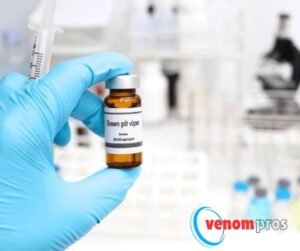
Snakebite Treatment & Management: A Comprehensive Guide
Snakebites are a significant medical concern worldwide, particularly in tropical and subtropical regions. Additionally, many survivors suffer from permanent disabilities. Despite these alarming statistics, snakebite management remains an underfunded and neglected area of healthcare in many parts of the world. Proper treatment and management of snakebites can drastically reduce mortality and morbidity rates. This article aims to provide a comprehensive guide on snakebite treatment and management, focusing on first aid, clinical management, and long-term care in Snakebite Treatment.

Understanding Snakebites
Snakebites can be categorized into two types: venomous and non-venomous. While most snakes are non-venomous and their bites cause minimal harm, venomous snakes pose a serious health risk. The severity of a snakebite depends on various factors including the type of snake, the amount of venom injected, the bite location, and the victim’s overall health in Snakebite Treatment.
Types of Venom
Venomous snakes can be broadly classified into three categories based on the type of venom they produce:
Neurotoxic Venom: Primarily affects the nervous system, leading to paralysis, respiratory failure, and sometimes death. Cobras, kraits, and mambas are known for their neurotoxic venom.
Hemotoxic Venom: Targets the circulatory system, causing blood clotting disorders, internal bleeding, and tissue damage. Vipers and pit vipers are examples of snakes with hemotoxic venom.
Cytotoxic Venom: Causes local tissue damage, leading to swelling, blistering, and necrosis. Puff adders and some types of cobras have cytotoxic venom in Snakebite Treatment.

Immediate First Aid for Snakebites
The initial response to a snakebite is crucial and can significantly impact the outcome. Here’s what to do:
Encourage the victim to stay as still and calm as possible.
Immobilize the Affected Limb: Keep the bitten limb at or slightly below heart level and immobilize it with a splint to reduce venom spread.
Remove Tight Clothing or Jewelry: As swelling may occur, it’s essential to remove any constrictive items around the bite site to prevent complications.
Avoid Cutting the Wound or Sucking Out the Venom: These traditional methods are ineffective and can cause more harm, including infection.
Do Not Apply a Tourniquet: Tourniquets can cause severe damage by cutting off blood flow, potentially leading to limb loss.
Transport to Medical Facility: Immediately seek medical attention. Time is critical, especially if the snake is venomous in Snakebite Treatment.

Clinical Management of Snakebites
Upon reaching a medical facility, the following steps are generally taken for effective snakebite management:
1. Assessment and Stabilization
The first priority is to stabilize the patient. This includes checking vital signs, securing the airway, and initiating intravenous access. The bite area is cleaned, and a tetanus shot may be administered if the patient hasn’t been vaccinated recently.
2. Identification of the Snake
While it’s not always possible, identifying the snake can assist in choosing the appropriate treatment. If the snake has been killed, it can be brought to the hospital for identification. However, victims should never attempt to capture or kill the snake, as this increases the risk of further bites.
3. Antivenom Administration
There are different types of antivenom, including monovalent (specific to one type of snake) and polyvalent (effective against several types of venom). The choice of antivenom depends on the type of snake involved or the symptoms presented.
The dosage of antivenom varies based on the severity of the envenomation. An initial dose is administered, and the patient’s response is closely monitored. Additional doses may be required depending on the severity of symptoms and the type of snake involved.
4. Symptomatic Treatment
In addition to antivenom, supportive care is essential. This may include:
Pain Management: Snakebites can be extremely painful, and analgesics are often required.
Fluid Resuscitation: To manage shock and maintain blood pressure.
Blood Products: For patients with coagulopathy or hemorrhage due to hemotoxic venom.
Antibiotics: Although snake venom is generally sterile, the bite wound can become infected. Prophylactic antibiotics may be prescribed, particularly if there is significant tissue damage.
5. Monitoring and Complication Management
Continuous monitoring is crucial as snakebite victims may develop complications such as:
Anaphylaxis: A severe allergic reaction to the antivenom or venom.
Acute Kidney Injury: Particularly common in bites from vipers.
Compartment Syndrome: Increased pressure within the muscles around the bite area, requiring surgical intervention in Snakebite Treatment.

Long-Term Care and Rehabilitation
Recovery from a snakebite can be prolonged, especially in cases of severe envenomation. Long-term care may include:
Physical Therapy: To restore function and mobility in affected limbs, particularly if there was significant tissue damage or compartment syndrome.
Psychological Support: Snakebites can be traumatic, and some patients may develop anxiety, depression, or post-traumatic stress disorder (PTSD).
Wound Care: Ongoing care of the bite wound is essential to prevent infection and promote healing.
Follow-Up Appointments: Regular follow-up visits to monitor for any delayed effects of the snakebite or complications from the treatment in Snakebite Treatment.
Prevention of Snakebites
Wear Protective Clothing: When in snake-prone areas, wear long pants, boots, and gloves.
Be Aware of Your Surroundings: Avoid tall grass, piles of leaves, and rocks where snakes might hide.
Use a Stick to Probe Ahead: When walking in areas with poor visibility, use a stick to probe the ground ahead of you.
Avoid Handling Snakes: Even if a snake appears dead, it may still bite reflexively in Snakebite Treatment.

Conclusion
Snakebites are a medical emergency that requires prompt and effective treatment to minimize mortality and morbidity. Proper first aid, rapid transportation to a medical facility, and appropriate clinical management are essential components of snakebite care in Snakebite Treatment.
Also read this;>Venom in the Wild: How Poison Shapes Animal Behavior and Ecology
Also read this;>“Skyward Symphony: A New Dawn in Gaming”







